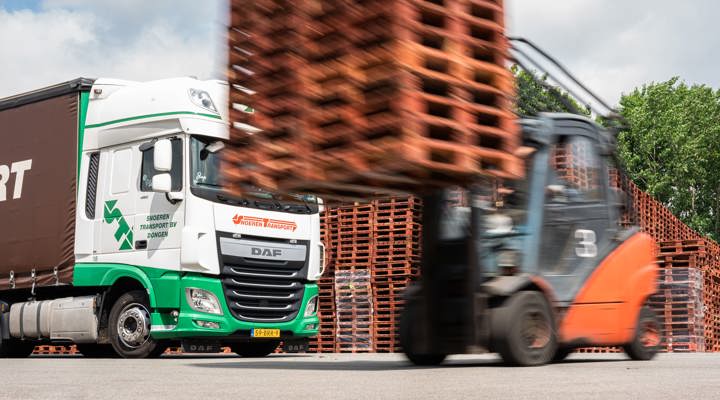08 April 2025
Loading a pallet correctly is important, even if it may seem like a routine task. At IPP, our pallet pooling network aims to enhance your supply chain.
We make the pallets, and you rent those pallets to help deliver your goods. Loading these pallets correctly ensures you get the best use out of our pallets and also prolongs the life and health of the pallet to prevent any unwanted damage.
Read on for our tips and guidance on how to load a pallet to ensure it can move safely through your supply chain.
How to prepare your pallet
Preparing your pallet for loading is an important step. These are the biggest considerations to make sure you prepare correctly:
- Ensure the pallet you are about to load is not damaged and is in good working order.
- Ensure the goods you are about to load are packaged securely.
- Ensure the goods do not exceed the pallet’s maximum weight.
- Ensure the goods are evenly distributed across the pallet.
Pallet stacking methods
Although there is no right or wrong method to correctly stack a pallet for distribution, as pallet pooling experts, we have the following top tips to consider when stacking your pallets with goods:
- Make sure heavier items are at the bottom.
- Try to make sure goods are close together to reduce any movement in transit.
- Smaller and lighter goods to be stacked on the top.
- Where possible, ensure goods line up with the edge of the pallet; do not let them overhang.
How high can a pallet be stacked?
The maximum height that a pallet can be loaded and stacked is dependent on the size of the pallet. This also includes the height of the pallet itself in these heights.
- Full pallet 220cm
- Half pallet 200cm
- Quarter pallet 60cm
A pallets maximum weight
Like a pallet's height, the maximum weight of a pallet in our pooling network depends on the type and size of the pallet that is used.
- Full pallet 1200kg
- Half pallet 500kg
- Quarter pallet 200kg
You can check out all the different pallets and boxes in our pallet pooling system to find the size that fits your needs.
How to secure a pallet
Once all items are carefully stacked and properly aligned on the pallet, they must be securely fastened to prevent any shifting or movement during transportation. This is typically achieved using stretch or shrink wrap. Additionally, banding or strapping is also used to hold the load in place.
Throughout the pallet distribution process, pallets are typically handled at least six times. Any movement of the goods during these handling stages could compromise the load by loosening the stretch or shrink wrap, potentially leading to instability and an increased risk of damage. Proper securing techniques help maintain the pallet’s stability, ensuring that the goods remain safe.
Packing irregular loads
We know that not all loads are going to be easy to pack onto a pallet and there will be times when there are irregular loads or loads that contain unusually shaped items. When this occurs, you should follow the following steps:
- Fragile/oddly shaped goods to be placed in the middle of the pallet.
- Use extra stretch wrap and strapping to secure goods to the pallet.
- Unusually shaped goods are to be wrapped in bubble wrap or boxes to help secure them and reduce movement.
Join our pallet pooling network
Now that you know how to load a pallet with goods, you just need the pallets themselves. Why not join our pallet pool and rent our pallets to reduce cost and complexity? Contact us to find out more.
